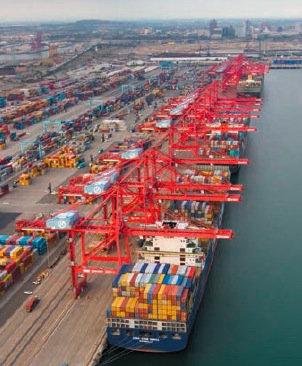TRANSPORTATION RESEARCH BOARD
 The United States depends on transportation to compete globally and to help revive a sluggish domestic economy. Individuals depend on transportation not only to get to work but to shop, socialize, and access health care, among other goals (1). For all of its benefits to the nation and individuals, however, transportation imposes large costs—lost time in traffic congestion, deaths and injuries from crashes, demand for imported petroleum, and the release of greenhouse gas emissions and other forms of pollution.
The United States depends on transportation to compete globally and to help revive a sluggish domestic economy. Individuals depend on transportation not only to get to work but to shop, socialize, and access health care, among other goals (1). For all of its benefits to the nation and individuals, however, transportation imposes large costs—lost time in traffic congestion, deaths and injuries from crashes, demand for imported petroleum, and the release of greenhouse gas emissions and other forms of pollution.
Focusing on Research
The Executive Committee of the Transportation Research Board (TRB) has compiled a list of critical issues in transportation for 2013 to stimulate awareness and debate and to focus research on the most pressing transportation issues facing the nation:
- The performance of the transportation system is neither reliable nor resilient, yet transportation’s role in economic revival and in global economic competition has never been more important.
- The nation suffers significant, avoidable deaths and injuries every year, although safety has improved markedly.
- Although essential in meeting economic and social goals, transportation exerts large-scale, unsustainable impacts on energy, the environment, and climate.
- Inadequate funding sources for public infrastructure impede the performance and safety of the transportation system, but alternative sources of funding may place a larger financial burden on users who are least able to pay.
- Although the United States is known for its creativity and its problem solving, innovation in passenger mobility services and in public-sector infrastructure lags far behind that in the private sector.
- The research and development (R&D) investment necessary for finding and adopting new solutions is low and declining.
The following discussion highlights information developed in recent reports by TRB and other divisions of the National Research Council.
System Scale and Scope
 The U.S. transportation system is enormous by any measure (see text box, below), and its tremendous scale and scope testify both to its importance and to its impacts, positive and negative. This massive transportation system may be adequate to serve today’s population and economy, although highly congested locations make that contestable. Nevertheless, maintenance and expansion are necessary to accommodate an expected 20 percent growth in population—an additional 66 million people— and an 80 percent growth in the gross domestic product (GDP) in the next 25 years (2, 3). Whether the transportation system can meet these needs is an open question.
The U.S. transportation system is enormous by any measure (see text box, below), and its tremendous scale and scope testify both to its importance and to its impacts, positive and negative. This massive transportation system may be adequate to serve today’s population and economy, although highly congested locations make that contestable. Nevertheless, maintenance and expansion are necessary to accommodate an expected 20 percent growth in population—an additional 66 million people— and an 80 percent growth in the gross domestic product (GDP) in the next 25 years (2, 3). Whether the transportation system can meet these needs is an open question.
This unranked list of critical issues presents recurrent themes made more prominent by the concerns of the day. The rancorous debate about deficits and taxes has precluded the national government from addressing the investment needed to improve transportation system performance. Congress reflects the differing visions that Americans have for the federal role in funding infrastructure—for example, whether to raise federal taxes or to rely on the states or to fund intercity highspeed passenger rail. States are shouldering greater responsibility for funding, but whether they can—or should—without substantial federal support is part of the debate.
Continued uncertainty about the direction of federal policy and about funding shortfalls underscores the importance of research. The discovery and adoption of new solutions to the critical issues can help address the daunting challenges ahead.
Download full version (PDF): Critical Issues in Transportation
About the Transportation Research Board
www.trb.org
“The mission of the Transportation Research Board is to provide leadership in transportation innovation and progress through research and information exchange, conducted within a setting that is objective, interdisciplinary, and multimodal.”
Tags: National Academies, Transportation Research Board, TRB, TRB of NA






 RSS Feed
RSS Feed